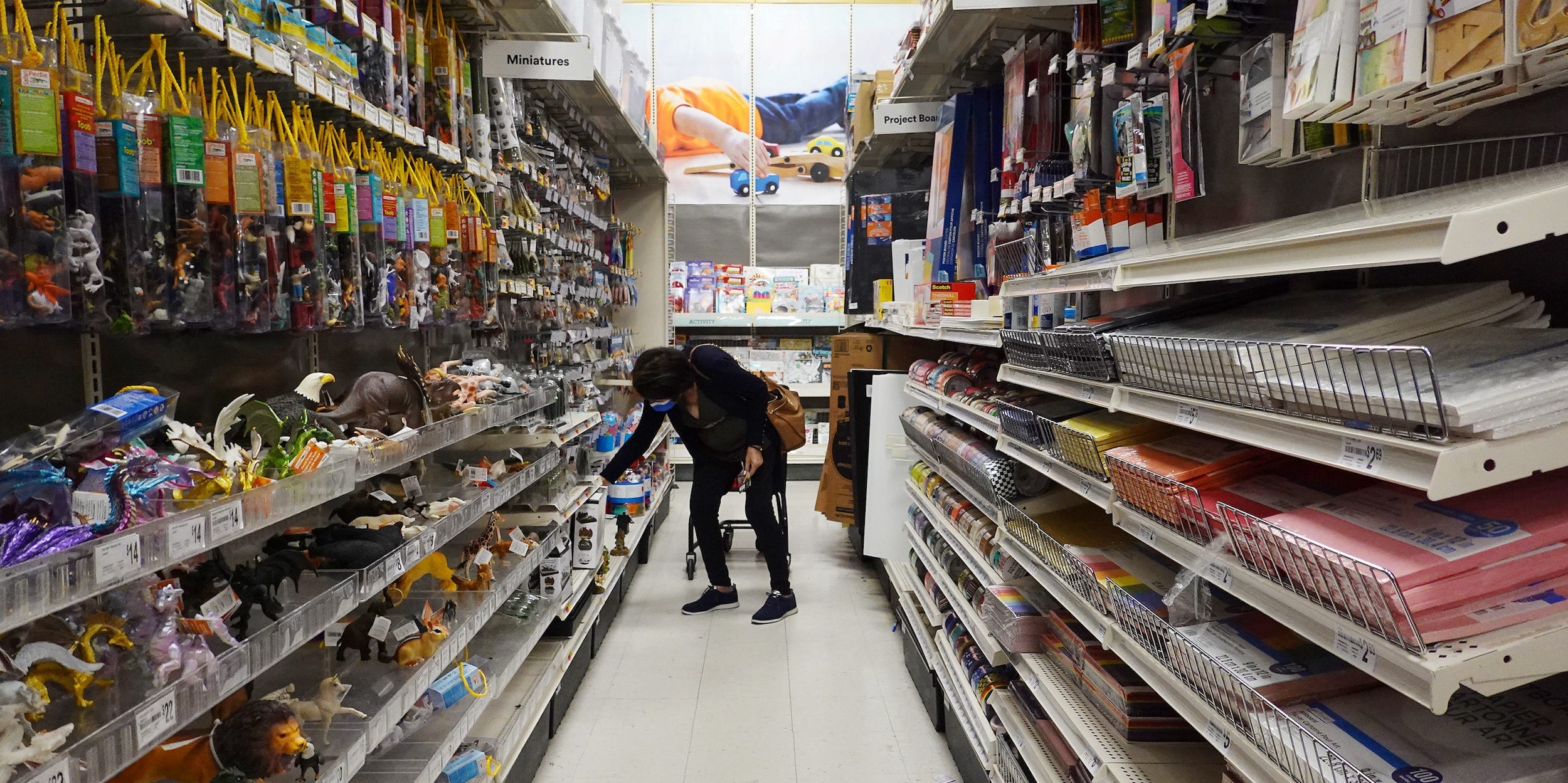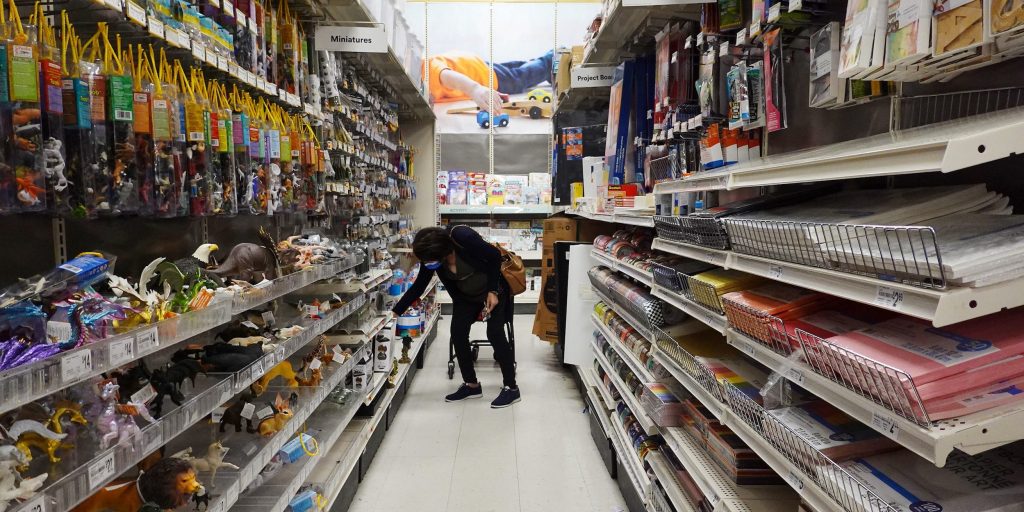
Joe Raedle/Getty Images
- Many economists expect inflation to cool as the US economy reopens despite April's big jump.
- Wednesday data showed prices climbing in March at their fastest rate since 2009.
- Solving bottlenecks and hiring woes will help businesses catch up with the post-pandemic boom, experts said.
- See more stories on Insider's business page.
Reopening-fueled inflation has arrived.
The Consumer Price Index – a key gauge of nationwide price growth – leaped 0.8% in April, trouncing the median estimate of a 0.2% jump. The increase was the largest since 2009. The index that excludes food and energy prices rose 0.9%, and that was the largest one-month surge since 1982.
The data highlights that relaxed lockdown measures, stronger demand, and widespread supply shortages converged to boost price growth. More recent headlines, particularly news of a cyberattack crippling a key oil pipeline, suggest inflation will accelerate further in May.
But for many economists, the unexpectedly large April jump isn't a reason to worry, and those with the greatest influence over inflation seem unperturbed.
The Federal Reserve has said for months that, while reopening will likely accelerate price growth, the pickup will likely be temporary. In February, Fed Chair Jerome Powell noted the decades-long trend of weaker-than-hoped price growth isn't likely to be permanently overridden by months of reopening.
"Inflation dynamics do change over time, but they don't change on a dime," he said, adding stimulus passed during the pandemic is also unlikely to change the predominant trend.
Fed Vice Chair Richard Clarida echoed his colleague's remarks after Wednesday's report. The inflation data was a "surprise," but inflation should still cool and trend near the Fed's long-term goal of 2% by next year, he said in remarks to the National Association for Business Economics International Symposium.
"We have pent-up demand in the economy. It may take some time for supply to rise up to demand," Clarida added.
That imbalance between supply and demand is one of the top culprits behind the April uptick. Factories warned throughout the month that bottlenecks, order delays, and huge backlogs were keeping firms from servicing a boom in consumer demand. Hiring woes also slammed manufacturers, leaving them unable to scale their production.
Addressing backlogs and lifting supply should help inflation cool over the summer, JPMorgan economists said in a recent note. Robust economic growth and continued policy support will drive more Americans into the workforce and bottlenecks, by their nature, will fade as businesses rush to service outsize demand, the team led by Bruce Kasman said.
In a separate note published Wednesday, the bank sais "temporary pressures" were lifting inflation, citing "commodity prices, bottlenecks, and price level normalization." Once the economy returns to its full potential and shortages are alleviated, price growth should slow, the team added.
Even the nature of the inflation bounce suggests the price growth won't last. One-third of the 0.8% boost was linked to a record-high increase in used vehicle prices as demand ran up against an inventory shortage. The rest of the increase was largely powered by other reopening-related expenses including airline tickets, recreation, and lodging.
It's logical to expect demand for travel and leisure to normalize after booming through the reopening. Powell illustrated the limitation in March, noting one "can only go out to dinner once per night." If long-shuttered businesses continue to drive faster price growth, it's likely inflation will weaken once the country enters a new normal.
And the April report, while surprising, only shows one month of hot inflation. It would likely take a few more stronger-than-expected readings to worry Fed officials, Edward Moya, senior analyst at Oanda, said Wednesday.
"If the inflation numbers continue to surge at the end of the summer, that might be what could force Powell to pivot that pricing pressures might not be transitory."

